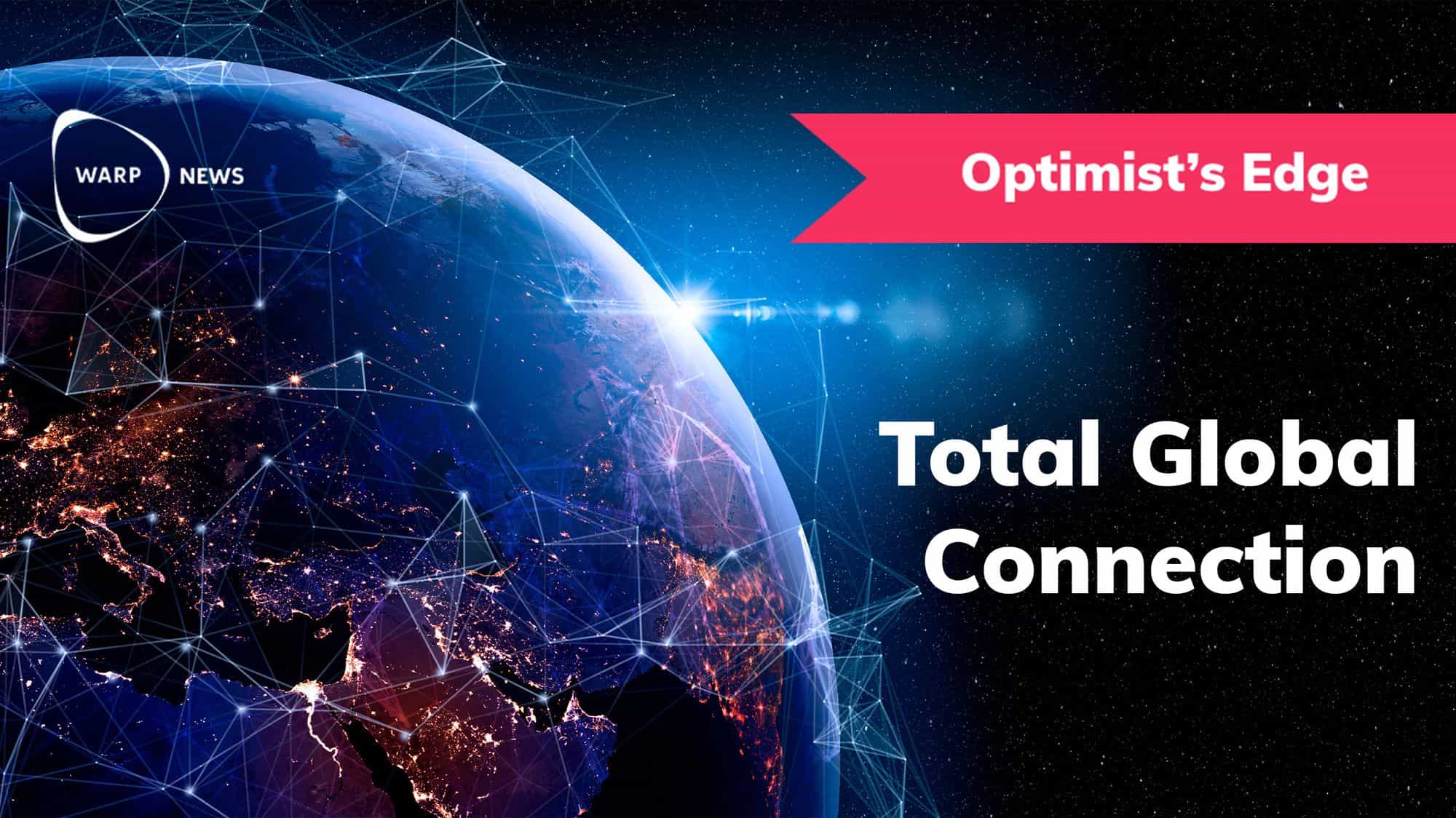
💡 Optimist's Edge: How the next evolution of satellite internet will revolutionize the world
After a 25-year track record of slow speed, data caps, and poor service, most people have a bad impression of satellite internet. But new technology, pioneered by Starlink, aims to change that and set the stage for the next evolution of internet service that will connect the entire planet.
Share this story!
Summary
📉 What people think
Satellite internet services are usually synonymous with high latency, unreliable connections, slow speeds, and lousy service plans. It is primarily used by people who live in rural areas where infrastructure for broadband or fiber does not exist. After 25-years of consumer service availability, satellite internet has developed a rather bad reputation compared to the lightning-fast options available to people who live in highly populated urban or suburban areas with extensive infrastructure.
📈 Here are the facts
What people think about satellite internet has actually been true for a long time, and the proof is quite demonstrable. Moreover, there are billions of people that, even today in 2021, still have no internet access at all, and many are unlikely ever to have it if we only focus on developing fiber-based internet. Simply adding more fiber and broadband infrastructure to sparsely populated, remote areas is not the solution.
The next evolution of the internet is through satellites – a business pioneered by SpaceX's Starlink.
💡 The Optimist's Edge
Can you imagine what total global connection could truly mean for humanity? We, as a civilization, have made unbelievable advancements in the last 30 years since the public launch of the World Wide Web. Smartphones, GPS, social media, and video conferencing, to name a few. It is truly mind-boggling to think that all of these advancements, inventions, and innovations have been created with only half of the human race connected and able to participate.
What will happen when the other half gets online as well? The old adage that history is destined to repeat itself will shine in. Look at what happened to humanity with the invention of the printing press in the 15th century, electricity in the late 19th century, and the telephone. With each significant advance in humanity's ability to communicate with one another, an explosion of innovation and advancement soon follows.
👇 How to get the Optimist's Edge
Next evolution satellite internet is already becoming available. Industry pioneer SpaceX has released Starlink in its beta phase over the past year, and it is expanding at a very fast rate. Even if it is not in your area yet, you can pre-order a kit. You might consider doing so even if you already have access to broadband or fiber. In the full article, we'll explain why.
Starlink is not alone. More and more companies are entering the field, and this trend will certainly not slow down as the months and years continue. Great opportunities are available for job seekers, entrepreneurs, and investors.
Nearly four billion people will soon have access to the internet for the first time ever. That is a lot of minds and a lot of ideas. Perhaps even ideas that will change the world like never before, and now they can, because these people will be able to share their ideas globally for the first time.
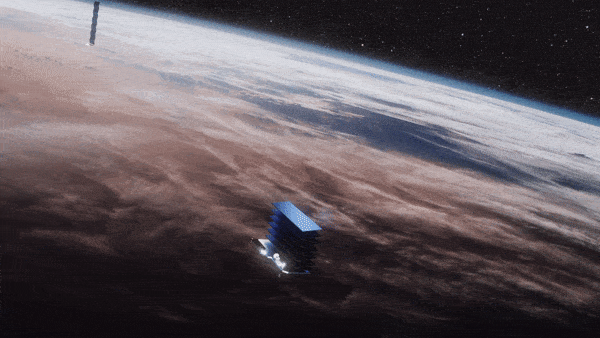
📉 What people think
Satellite internet is the last resort of internet service for people who have no other options available. It is primarily used by people who live in rural areas where infrastructure for broadband or fiber does not exist and is financially unfeasible for internet service providers to install. For many, it is quite literally "better than nothing" internet. Yes, you get a connection. But these services are usually synonymous with high latency, unreliable connections, slow speeds, and lousy service plans.
In the experiences of one man, Gerald Pine, a father of school-aged children and a retired serviceman of the United States Airforce, the experiences of satellite internet services are summed up quite accurately in comments he made to the Federal Communications Commission:
“If it rains, or if it snows, and they [the children] need to listen to a podcast or they want to watch anything educational, do research, listen to teachers online, they cannot do so because the connection ping time is so bad and on top of that, it uses too much of our plan…. Our kids can’t do their homework at home.”
Satellite internet as a service now has a 25-year track record. Compared to the lightning-fast options available to those who live in highly populated areas with extensive infrastructure, it has developed a bad reputation. The assumption has become that this is just one of the costs of living a life outside the big city.
And yet, as frustrating as it is for Gerald and the millions of other rural citizens like him, at least his voice can be heard. There is another segment of people we would have loved to have surveyed what they think about internet access. They represent a rather large group, a segment numbering in the billions. They do not complain about things like high latency, slow speeds, or lousy service plans. These people have no internet access… at all. And many of them never have.
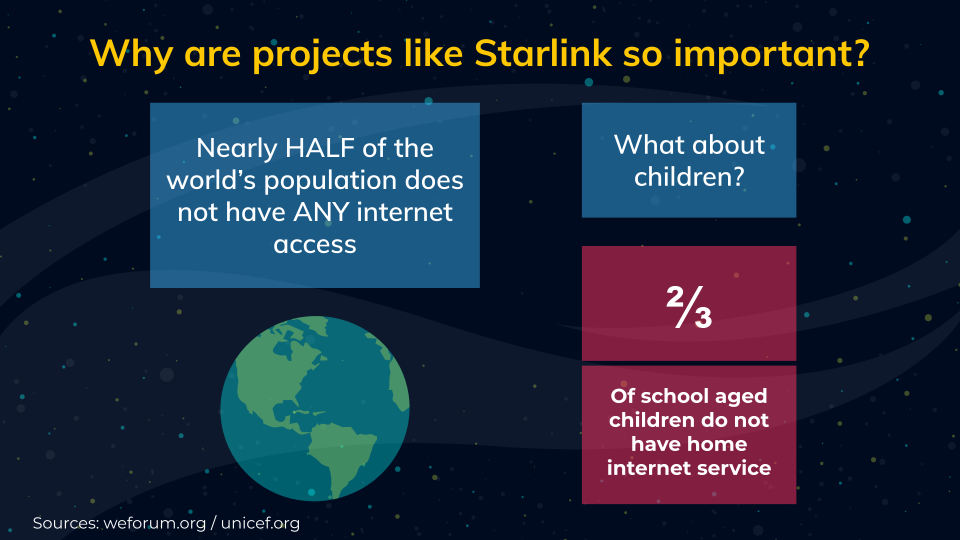
📈 Here are the facts
What people think has actually been true, and the proof is quite demonstrable. The people that make up these statistics experience the results of satellite internet service first-hand.
During the last 25 years, new technologies have helped bring high-quality connectivity to more people than ever before. However, millions of rural Americans and billions of people worldwide still don't have broadband access.
Still today, in 2021, nearly half of the world's population has no access to the internet at all. In the United States, although 100% of the country has access to satellite internet services via HughesNet, ViaSat, and others, over a quarter-million Americans still use dial-up internet, and just over 8 million rely on satellite internet.
With satellite service, there have historically been some major concessions customers have had to make to access the internet:
- High latency: Signals must travel long distances from the customer's home to a satellite in outer space, via an ISP, and back. This causes what is often referred to as lag, and with satellite internet is has been notoriously bad.
- Data limits: Satellite providers often advertise high speeds with unlimited data. This is a lot of smoke and mirrors. In this example, you can see that the "unlimited data" is throttled to an excruciating 1-3 Mbps after exceeding the "plan data," which is usually about 50 GB. To put that into perspective, the average Zoom call uses about 1 GB per hour, the average YouTube video uses about 3 GB per hour, and a 2-hour movie streamed in 1080p uses about 14 GB. How long would it take you or your family to burn through 50 GB? For an average household, it would take about four days.
- Weather dependent: If having to strictly budget your and your family's internet consumption and dealing with high latency aren't frustrating enough, it is also recommended that you pray for drought and move to the flatlands. Things such as cloud cover, rain, snow, hills, and trees frequently interfere with signals. This will result in erratic performance and dropped connection.
Broadband and Fiber are NOT the solutions
Whether we are discussing the millions of people who rely on inferior satellite internet services or the billions who have no internet at all, there is one common root cause. The infrastructure is not in place to provide broadband or fiber internet to people who live outside of the radius of urban and suburban areas.
In many cases, it is financially unfeasible for internet service providers to run the necessary lines to rural properties. According to the U.S. Department of Transportation, statistics show an average cost of $27,000 per mile (about $43,000 per km) to install fiber internet cable.
In several instances, ISPs claim they are willing to do the work to install this cable for potential residential customers but are unwilling to eat the costs. For a person living several miles from the nearest existing fiber junction, the costs could quickly escalate into hundreds of thousands of dollars.
One of the primary examples of massive disconnection is on the continent of Africa. In a previous Optimist's Edge article, we took an in-depth look at what a fully connected Africa could look like and mean for the world. One very ambitious and compelling project currently underway is 2Africa, which is laying thousands of miles of undersea fiber internet cable to connect the coastal African nations to Europe and the Middle East. From there, the coastal countries will connect with the landlocked nations. The project is a very positive development towards total global connection, but this infrastructure is beyond massive. Further, while this can undoubtedly connect many millions, it can not guarantee access to every village and person. Satellite internet can.
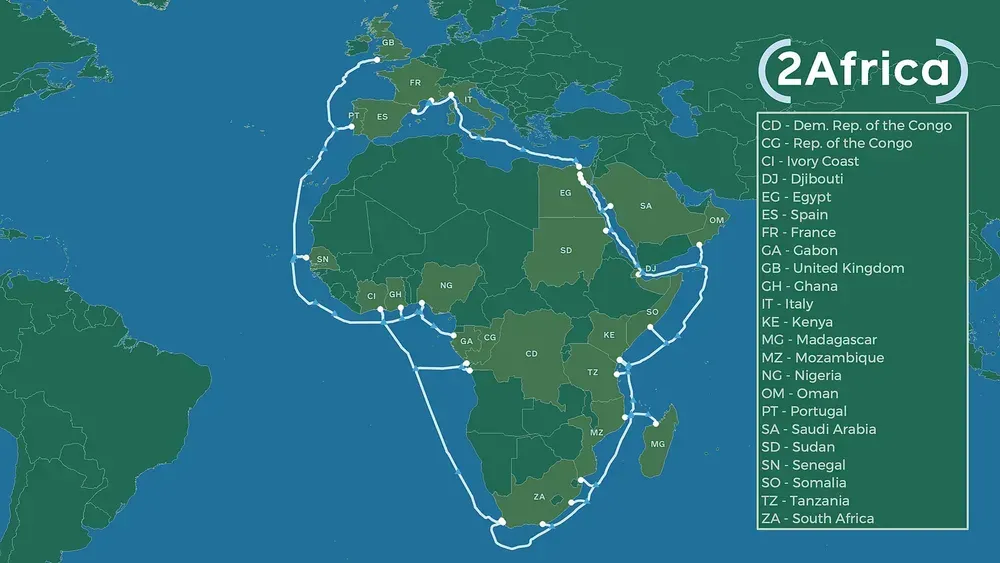
When we cannot fix it, we must either adapt or evolve
As the world becomes more technologically advanced and more everyday tasks and routines become reliant on a steady, strong internet connection, adaptation to the status quo of slow internet or no internet is not an option. It must evolve. Enter the next evolution of satellite internet technology. Starlink.
Starlink was first launched on May 23, 2019. With it, SpaceX intends to provide a network of high-speed internet connections worldwide. There are a lot of aspects of the Starlink project that makes it different from traditional satellite internet services of the past three decades. A few of these key differences include:
- Low Earth Orbit: Traditionally, telecommunications satellites have orbited around 22,000 miles above the Earth. Starlink satellites orbit at altitudes ranging between 200 and 600 miles. This results in an exponential reduction in latency and an increase in speed potential.
- Space Lasers: This recent development by SpaceX allows Starlink satellites to communicate with one another without the need for ground stations. This technology will enable Starlink to deliver service to the most remote parts of the world, such as polar regions and Saharan Africa, where the construction of ground stations would be financially prohibitive.
- Brilliant design: The design of the Starlink receiver dish is brilliant. Inside a dish, hundreds of antennae communicate simultaneously with the thousands of satellites orbiting the Earth. This is what enables a robust and consistent connection with minimal downtime regardless (in most cases) of weather conditions and small physical obstructions such as tree branches.
In October of 2020, beta testing of Starlink's satellite program launched and aimed to deliver high-speed internet globally, particularly in underserved areas. Warp News co-founder and co-author of this article, Rich Spuller, was fortunate enough to become a participant in this beta program in May of 2021. Since then, Rich has used Starlink exclusively for his home internet service.
"Starlink has been a game-changer for me. I live in a semi-rural area of North Carolina and had never been able to get internet service faster than 12 Mbps through the only broadband option available to my home. With Starlink, I have seen speeds as high as 250 Mbps with very little downtime. On average, I lose connection two or three times a week, and it's only for a few seconds. I am confident enough in Starlink to have made it my sole internet service provider while being a partner in an international business." - Rich Spuller, Warp News
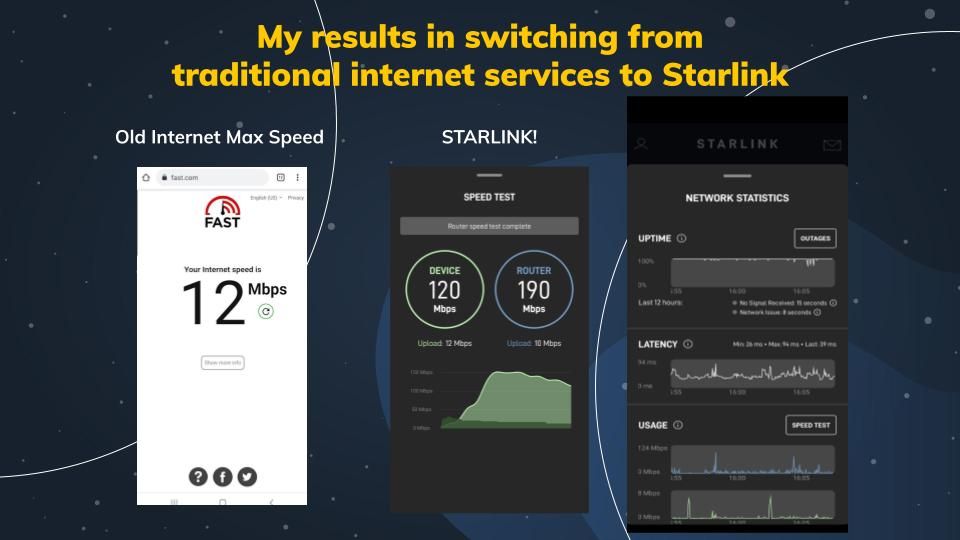
More companies are joining the industry
Starlink is not the only company looking at satellite-based internet services.
Another company trying to change the way we view satellite internet is OneWeb. The company is aiming to supply internet to:
- Enterprises
- Governments
- The marine industry
- The aviation industry
OneWeb currently has 650 satellites in low-earth orbit and provides internet to selected customers, with the plan to go global next year. They also offer a user-friendly platform where they provide tailored products that support satellite conductivity.
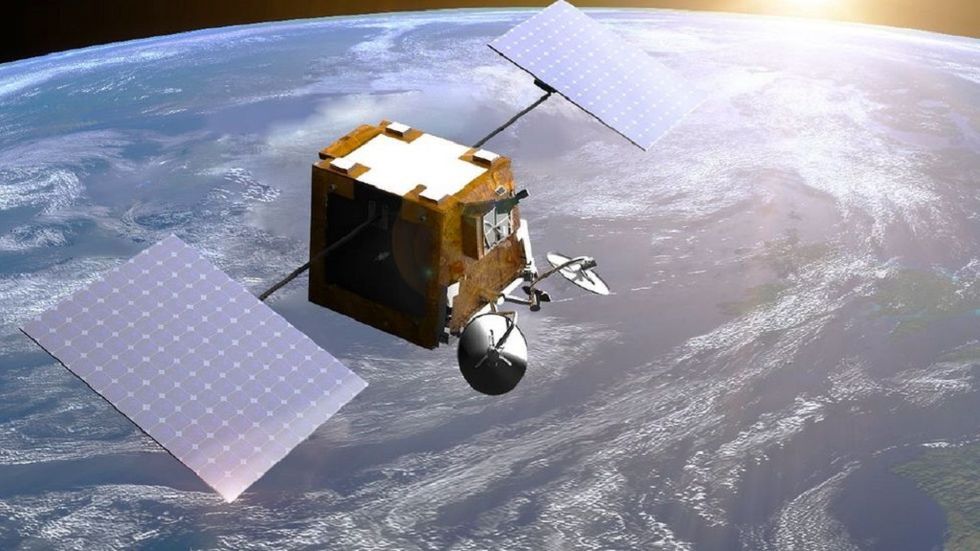
OneWeb is owned by, for instance, Eutelsat and Hughes Network Group, two companies that are ready to change their previous reputation of supplying relatively slow and unreliable internet.
Amazon is also expanding into the industry and is planning on sending up low Earth orbit satellites in their Project Kuiper. And although OneWeb and Project Kuiper are aiming for smaller satellite constellations compared to Starlink, they show that the future internet is in space.
💡 The Optimist's Edge
A total global connection will have a significant impact on how we live our everyday lives and has the potential to equalize the world, making it possible for everyone to begin their life on equal grounds. Imagine providing all the countries of the world with the internet. What would change?
Imagine making it possible for everyone to get an education. We can learn an incredible amount using the internet, so imagine the potential that shared knowledge between everyone on Earth would have. Imagine all of these people having great ideas and the possibility to share them.
The next evolution of satellite internet can make this possible as it can be provided even where landlines or cables are impossible to reach, giving even the farthest villages access to fundamental things such as education, medical advice, means of communication, and all those things we in the western world take for granted every day.
Therefore, one could argue that satellite internet is an Optimist's Edge in itself because it will, just as the printing press did forever, change the way we as a community view the world. And it is a means we can use to make sure everyone on Earth has the same tools.

The printing press changed the way we communicate forever, by making it possible to spread information much faster and more efficiently. Credit: Wikimedia Commons, William Skeen- Early Typography by William Skeen, Colombo, Ceylon, 1872
👇 How to get the Optimist's Edge
Total global connectivity will finally be achieved with the next generation of satellite internet service.
You can sign up to get your own Starlink
Starlink is expanding at a very fast rate. On their webpage, you can sign up for a pre-order right now, no matter where you live in the world.
One of the most exciting features to keep an eye out for in the future is the ability to take your Starlink with you when you travel. Elon Musk has teased this feature since the service was first unveiled. This will be an excellent reason for someone with fiber internet or high-speed broadband to switch to Starlink. For those who have multiple homes, it would be able to save you money too. You would no longer have to pay for more than one internet service. Wherever you go, Starlink could follow.

You can apply for a job at Amazon
If you want to contribute to global satellite internet, you can apply for a job at Amazon. They have many different roles available with the aim of developing the Kuiper Project.
Consider investment or contribution opportunities in parts of the world that are about to embark on a digital revolution
As mentioned above, there is a digital revolution happening in Africa. Many initiatives and opportunities are in their infancy there. The fintech industry on the continent is poised to take off in the coming few years and could serve as the engine for all other vital areas such as trade, healthcare, and agricultural development.
Africa is not the only region with countries that do not have access to the internet. According to the Google page, GovermentPBL, 13 countries limit or do not allow citizens to use the internet to find information. Of course, there will be many political barriers and hurdles that will need to be resolved once the new generation of satellite internet allows for total global connection.
Understand the secret to human innovation and connect the dots to a world with total internet connection
How is it that human development throughout history has been so remarkable? How did we go from a small group of people living in one part of the African continent a few hundred thousand years ago to stepping out onto another celestial body? What is behind this development? How do humans always find a way? The answer is something that is behind every innovation in human history. It is behind every giant leap of humankind. If we find out what it is, we have the answer to our past and our future.
Warp News CEO, Mathias Sundin, answered that question in a TedX Talk from 2018. If you haven't watched or listened before, we highly recommend it.
What more can you do?
If you are reading or listening to this, you are among the lucky 50% who have a voice on the global stage. Use it.
One example is change.org, the popular public petitions site with over 10,000 separate petitions regarding internet access. Of course, not all of these petitions seek positive and effective change, so read carefully before attaching your name in support of any petition. A few petitions that we recommend looking into are:
- End the digital divide - provide children with internet access and a device to learn
- Internet Access and Freedom and a Human Right
- Searching for 'Satellite Internet' on change.org will render results for many nations that are currently among the worst in the world regarding internet access.
Whichever petitions you decide to support, or if you find others not listed here, be sure to share the news with your fellow Premium Supporters in our Facebook group.
Please invite your friends and family to join us as Premium Supporters and get the Optimist's Edge. Send them the link to this article or any of your favorite Optimist's Edge articles, and they will have an opportunity to become a Warp News Premium Supporter and access the same great content that you do.
You now have an edge because you have gained this knowledge before most others –